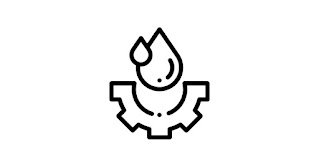1. Stanton diagram is a
a) log-log plot of friction factor against Reynolds number
b) log-log plot of relative roughness against Reynolds number
c) semi-log plot of friction factor against Reynolds number
d) semi-log plot of friction factor against relative roughness
Ans: a
2. The depth ‘d’ below the free surface at which the point velocity is equal to the average velocity of flow for a uniform laminar flow with a free surface, will be
a) 0.423 D
b) 0.577 D
c) 0.223 D
d) 0.707 D
where D is the depth of flow.
Ans: b
3. The boundary layer thickness in turbulent flow varies as
a) x”7
b) x,/2
c) x4/5
d) x3/5
where x is the distance from leading edge.
Ans: c
4. The distance y from pipe boundary, at which the point velocity is equal to average velocity for turbulent flow, is
a) 0.223 R
b) 0.423 R
c) 0.577 R
d) 0.707 R
where R is radius of pipe.
Ans: a
5. If a sphere of diameter 1 cm falls in castor oil of kinematic viscosity 10 stokes, with a terminal velocity of 1.5 cm/sec, the coefficient of drag on the sphere is
a) less than 1
b) between 1 and 100
c) 160
d) 200
Ans: c
6. In case of an airfoil, the separation of flow occurs
a) at the extreme rear of body
b) at the extreme front of body
c) midway between rear and front of body
d) any where between rear and front of body depending upon Reynolds number
Ans: a
7. When an ideal fluid flows past a sphere,
a) highest intensity of pressure occurs around the circumference at right angles to flow
b) lowest pressure intensity occurs at front stagnation point
c) lowest pressure intensity occurs at rear stagnation point
d) total drag is zero
Ans: d
8. With the same cross-sectional area and immersed in same turbulent flow, the largest total drag will be on
a) a circular disc of plate held normal to flow
b) a sphere
c) a cylinder
d) a streamlined body
Ans: a
9. In which of the following the friction drag is generally larger than pressure drag?
a) a circular disc or plate held normal to flow
b) a sphere
c) a cylinder
d) an airfoil
Ans: d
10. For hydro-dynamically smooth boundary, the friction coefficient for turbulent flow is
a) constant
b) dependent only on Reynolds number
c) a function of Reynolds number and relative roughness
d) dependent on relative roughness only
Ans: b

